
The First and Only Weekly Online Fanzine Devoted to the Life and Works of Edgar Rice Burroughs
Since 1996 ~ Over 15,000 Webpages and Webzines in Archive
Volume 6742
Unauthorized Tarzan Films
TARZAN AND DELILAH
By
Robert Allen Lupton
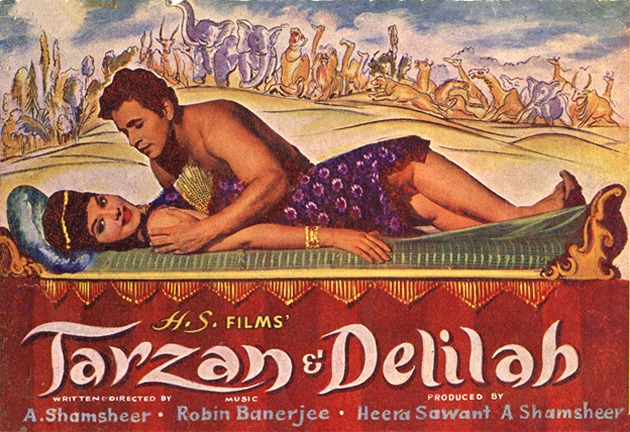


Tarzan and Delilah (1964), H. S. Films, produced by A Shamsheer and Heera Sawant, directed by A. Shamsheer. Shamsheer also directed Tarzan and King Kong. The poster above is the only image from this film I’ve been able to locate. I didn’t find alternate posters or a single lobby card. I couldn’t find a video. Recordings of some the songs listed below are available on several websites, but without any video.The summary plot that follows was compiled from information on several websites and my 30 to 35 year old memory of the film. An Indian friend of mine had an extensive VRC collection and we watched a couple dozen of the Bollywood Tarzan films. I kept a really bad notebook. Any mistakes or omissions are my fault.
The plot of the story begins years after a doctor’s sister was date raped. The doctor (the brother) kidnaps the daughter resulting from the rape from her foster parents. He plans to make the now grown child insane by injecting her with some substance. He is doing this to take revenge for his sister, who went crazy after becoming an unwed mother. For some reason, he blames the daughter for her mother’s mental problems. The logic escapes me, but that’s his plan.
The doctor delays poisoning the girl long enough for a drunkard, Fernandes, to find the secret hideout of the doctor, save the girl, Sunanda, and escape. He and the girl find a boat, steal it, and take to the sea. They encounter a cyclone that destroys the boat. The boat sinks and they are washed ashore on the jungle island where Tarzan and Delilah live. It’s a big island with thousands of jungle animals.
Zippy, the monkey, finds Fernandes and Sunanda on the shore and brings Tarzan to help them. He feeds them and gives them fresh water. They rest and a tribe finds the three asleep and captures them. They are taken to their queen Lali, who desires Tarzan. Her brother, Rozem, wants Princess Delilah (I remember her being a princess), who has been imprisoned by their mother, a female magician who captured Delilah for her son. Delilah sees Tarzan through the window of her prison and immediately is enraptured with the ape-man and rejects Rozem.Delilah sings from inside her prison and Tarzan is intrigued by Delilah’s voice, but he can’t rescue her because the door is bespelled by momma, the magician. There are flower statues that talk to Delilah and tell her that the only way to break the enchantment is for the blood of a pious male virgin to fall upon the prison walls.
To dispel the enchantment, she shoots Tarzan with an arrow. I wondered how an imprisoned princess had access to a bow and arrows, but it was never explained. His blood drips on the door and the spell is cancelled. He enters and frees Delilah and other female prisoners. He forgives Delilah for shooting him and takes to her to his jungle abode.
Needless to say, this makes Queen Lali and her brother upset. They try many unsuccessful plots to capture Tarzan and Delilah. Eventually, they throw Tarzan into the midst of several hungry lions, but Zippy, the Chimpanzee, comes to his rescue with an animal stampede.
Rozem plots to blind Sunanda for some reason. In the meantime, Fernandes, the former drunkard, and Sunanda have fallen in love. They disguise themselves as snakes with Delilah’s help, but they are discovered and captured again. The Queen offers Sunanda the choice to kill Delilah or be killed herself. She accepts. She is supposed to kill Delilah at the end of Delilah’s big production number, but she changes her mind during the crescendo and stops the queen. Tarzan ends up with Delilah, Fernandes ends up with Sunanda. Everyone hugs and prepares to live happily ever after. Well, everyone except the Queen and her brother.
The following songs are in the film. The translations are my own - guided by internet translation programs. Bear in mind that Hindi phrasing is different from English and words and even translated, they have meanings that are not literal.
Azad Arani appears in this film. It’s one of his nineteen outings as Tarzan. This series of articles on Unauthorized Tarzan films is an ongoing work in progress and I haven’t reviewed all of his films at this point. Azad has appeared in six previous articles in this series, Toofani Tarzan 1962, Tarzan and the Circus, Tarzan and the Gorilla, Tarzan and the Sorcerer, Tarzan, My Beloved, and Tarzan and the Wonderful Lamp. Some sources credit him with playing Tarzan in the film, Rocket Tarzan, but I do not agree. If he is credited with Rocket Tarzan, he starred in 20 Tarzan films, the most of any actor including Johnny Weissmuller. Azad belonged to that rare breed of Zoroastrian actors who dominated the early Indian Cinema because of their looks and build but with limited Hindi language and acting skills. Azad started his career as a hero with the B-Grade jungle/stunt film, Zimbo, (1958) which was a success at box-office. Along with Dara Singh, he remained a popular stunt hero in many B-Grade ventures including Lady of the Lake (1960), Pedro (1960), Zimbo Comes to Town (1960), Tarzan aur Gorilla (1963) etc.For example, a literal translation of O Dur Gaga Ke Chanda would be something like, “I subscribe to crazy beliefs,” rather than my preferred translation, “I’m Crazy To Believe.” “Dil Ki Dhadkan Pukare”, translates as “My Heartbeat Calls” sung by Suman Kalyanpur, directed by Robin Banerjee and written by A Shamsheer. “Mori Payal Geet Suna,” translates as Hear My Anklets Song”, and is sung by Usha Mangeshkar, directed by Robin Banerjee and written by A Shamsheer. It refers to the music created by dancing with anklets covered with bells. “Bawra Man Haay Dhokha”, translates as “My Foolish Mind is Cheating,” and is a duet by Indrani Mukherjee and Savita Banerjee, directed by Robin Banerjee and written by A Shamshieer. “Dil Mera Diwana Hone Chala”, or “My Heart Goes Wild” is sung by Mahendra Kapoor and Kamal Barot. It was written by Yogesh Gaud “Hakiquat Mohabbat Ki Duniya”, translates as “The Real World of Love” and is sung by Mahendra Kapoor, directed by Robin Banerjee and written by A Shamsher. “O Dur Gaga kE Chanda”, which I translate as “I’m Crazy to Believe”, sung by Usha Mangeshkar and directed by Robin Banerjee and written by A Shamshir. Unfortunately, with the beginning of the '70s when the popularity of jungle and stunt films started to wane, Azad was reduced to cameo roles before he faded into oblivion by the beginning of the '80s.
According to his son, Melvin Irani, Azad currently resides in Maryland, USA. (2018) He lives with his wife and son, Melvin. He has been diagnosed with Parkinson’s disease since the year 2001. However, as a true Tarzan, he is still going strong and fighting Parkinson’s disease on a daily basis.
Other biographical information and photographs are located in these articles.
http://www.erbzine.com/mag67/6732.html
http://www.erbzine.com/mag67/6735.html
http://www.erbzine.com/mag67/6733.html
http://www.erbzine.com/mag67/6739.html
http://www.erbzine.com/mag67/6740.html
http://www.erbzine.com/mag67/6741.html
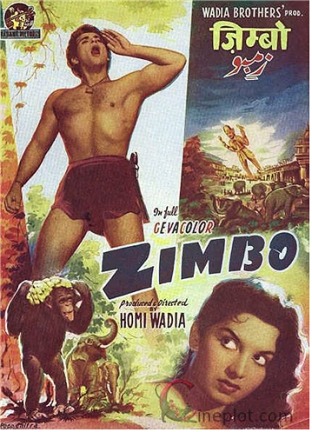
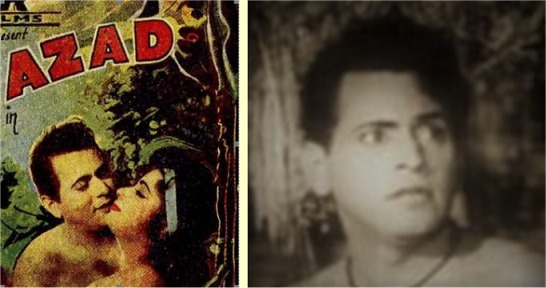
She came from a nawabi (royal) family of Hyderabad. Chitra
visited to Bombay for avacation, and was fond of movies. When she got an
offer to act, she jumped at it.
She was interviewed in 1990 by Khalid Mohamed
and the following is an excerpt from that interview.
I’m from a nawabi (royal) family
of Hyderabad. I’d come to Bombay for holidays, I was fond of movies. So,
I told myself, why don’t I become a heroine? The mirror said yes, you must.
I became a heroine opposite Ajit in Maan. But I became really popular with
Chor Bazaar with Shammi Kapoor as the hero. I’ve done all sorts of films:
historicals, socials, you name it. I’ve acted opposite Rajendra Kumar,
Balraj Sahni, Pradeep Kumar, Mahipal and Feroz Khan. I lived in a bungalow-type
house, I bought seven cars as I became more and more popular. I’ve done
111 films, I’ve counted them actually. I was in India’s first jungle color
film— Zimbo! I was in AVM studio’s Baap Bete. But then there was a tragedy.
I became too choosy, by dilly dallying whether I should do this film or
that film I lost a lot of time.
Work stopped coming and there wasn’t
the kind of money flow as earlier. And don’t ask me about things like marriage.
Just forget it. I do feel lonely at times but I’m trying to work as much
as I can. I’m okay, I’ve a decent 650 square foot flat, a phone. God forbid,
I’ve never starved. I’ve adjusted to the times. I like travelling by auto
rickshaw, it’s like sitting on a jhoola (swing).
Maybe I can still start some business
on my own. And I must tell you I have never indulged in bad habits like
going to the races. Horses frighten me. I’m also frightened by the way
today’s heroines look on the screen— why are all of them throwing off all
their clothes?
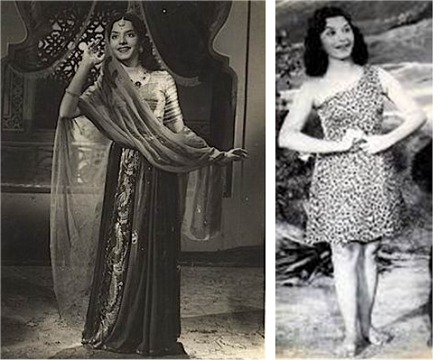
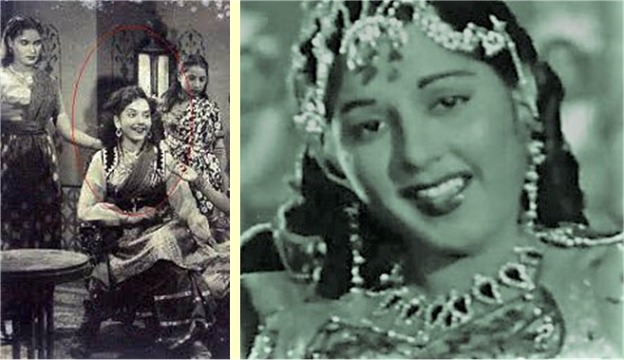
The prolific actress, Bella Bose, also appeared in Tarzan and King Kong, http://www.ERBzine.com/mag67/6737.html, and a biography and other photographs of her are in that article.
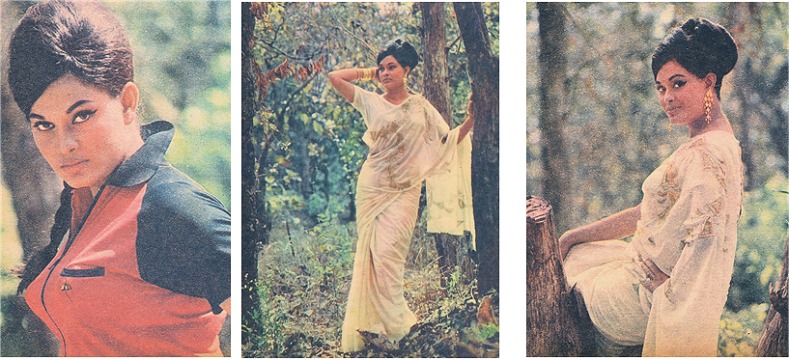
Randhir Kapoor, born 2/15/1947, is an Indian film actor, producer and director and a two-time Filmfare Award nominee.Part of the Kapoor family, he is the son of actor–filmmaker, Raj Kapoor, grandson of actor, Prithviraj, and the brother of actor, Rishi. After working as a child in Shree 420 (1955) and Do Ustad (1956), Kapoor made his acting and direction debut with a leading role in the family drama Kal Aaj Aur Kal (1971), a box office success. Subsequently, Kapoor's starring roles in the dramas Jeet (1972), Hamrahi (1974) and the romantic comedies Jawani Diwani (1972), Lafange (1975), Ponga Pandit (1975), Bhala Manus (1976) and the multi-starrers such as Raampur Ka Lakshman (1972) and Haath Ki Safai (1974) established him as a leading actor of Hindi cinema.
His performance in the film, Kasme Vaade, (1978) earned him critical acclaim and a Best Supporting Actor nomination at Filmfare. He performed in several successful films, including Bhanwar (1976), Khalifa (1976), Aaj Ka Mahaatma (1976), Chacha Bhatija (1977), Mama Bhanja (1977), Heeralaal Pannalal (1978), Chor Ke Ghar Chor (1978), Aakhri Daku (1978), Dhongee (1979), Biwi-O-Biwi (1981) and Humse Na Jeeta Koi (1981). Kapoor's career declined when the musicals romances Harjaee (1981) and Jaane Jaan (1983) flopped, and his films Khazana and Nikkama (both 1987) encountered many production delays. His career stalled in 1985 and he quit acting for over a decade. However, The self-directed blockbuster romantic drama Henna (1991), proved to be the most commercially successful film of the decade and earned him a Filmfare Award for Best Director nomination and was chosen as the Indian submission to the Oscars.
Kapoor is married to actress Babita Shivdasani since 1971, with whom he has two daughters, actresses Karisma and Kareena Kapoor.
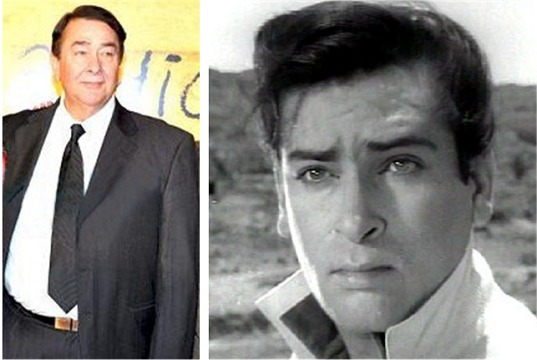
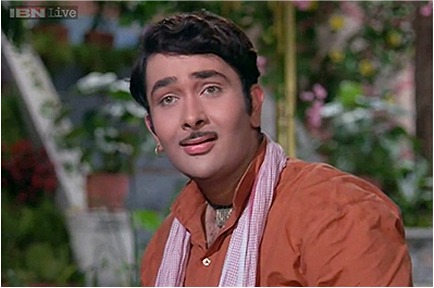
Agha was born March 21, 1914 in Poona, Maharashtra, India and died on April 30, 1992 in Pune, Maharashtra. He was of Persian descent. He was known for his comic roles. He appeared in over 300 Hindi films in his career between 1935 and 1986. His son, Jalal Agha, also became an actor, most known for the song Mehbooba Mehbooba (Beloved, Beloved) in the film, Sholay (1975).Agha claimed that he went to school for just three days, "that was as long as I could stand it". He spent time hanging around the Poona Race Course because he wanted to become a jockey and loved horses. Agha drifted to Bombay and joined an amateur drama group. His interest in acting led him to films and in 1933 he took a job as a production manager for Kanwal Movietone.
Agha's first film appearance was in Kanwal Movietone's Stree Dharma, or Painted Sin (1935), starring Mehtab and Nazir. However, his appearance in Karwan-e-Husn (1935), Wadia Movietone's Rangila Mazdoor, (1938) and Anuradha, (1940) helped him gain recognition as a comic actor. He acted in Kikubhai Desai's, Circus Ki Sundari (1941), which was popular and this led to leading roles in films, Laheri Cameraman (1944) and Taxi Driver (1944). His most active years were from the 1930s to the 1960s.
Agha died on April 30, 1992 of a heart attack in Pune, Maharashtra, India. He was 78 years old. He was survived by three daughters and one son, Jalal Agha. He was nominated for the Filmfare Best Supporting Actor Award for the 1960 film Ghunghat.
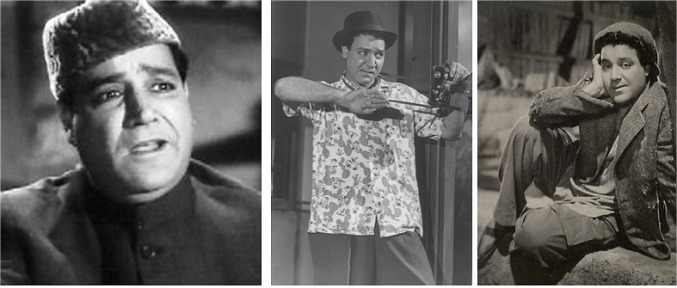
Bhagwan Dada (Master Bhagwan) was born in 1913 as Bhagwan Abhaji Palav in Sindhudurg, Maharashtra. He was the son of a textile-mill worker, but was obsessed with films. He worked as a laborer, but dreamt of being a movie star. He started with bit roles in silent films and became totally immersed in film production. He learned film-making and at made several low-budget films (in which he arranged for everything including the design of costumes and arranging meals for the cast) for less than 65,000 rupees.This is the fourth reviewed Unauthorized Tarzan film in which Master Bhagwan appears. He had roles in Tarzan Comes to Delphi, Tarzan and the Gorilla, and Tarzan and King Kong.
http://www.erbzine.com/mag67/6733.html
http://www.erbzine.com/mag67/6736.html
http://www.erbzine.com/mag67/6737.html
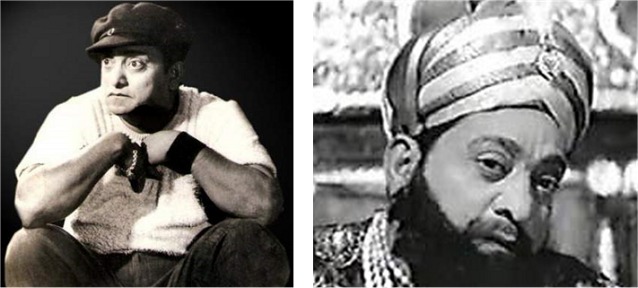
Heera Sawant also appeared in Tarzan and King Kong. Not only did she have a role in this film, but she was the co-producer along with A. Shamsheer. This lesson wasn’t lost on Clint Eastwood. If you produce and direct the film, it’s not too hard to be cast in a prominent role. Makes it easier to negotiate your salary, as well.http://www.ERBzine.com/mag67/6737.html
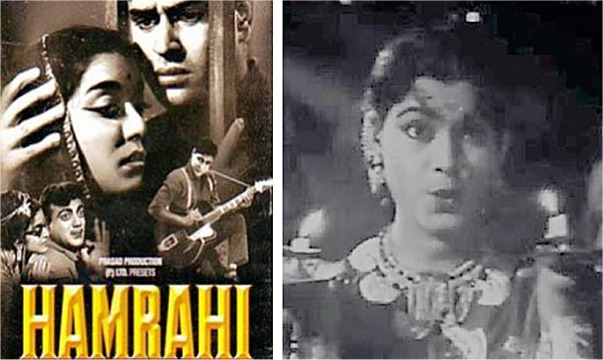
Leela Naidu was an Indian actress who starred in Hindi and English films, including Yeh Raste Hain Pyar Ke (1963). She was Femina Miss India in 1954, and was featured in Magazine in the list of "World's Ten Most Beautiful Women" from the 1950s to the 1960s in prominent fashion magazines worldwide. She is remembered for her stunning classical beauty and subtle acting style.Leela Naidu was born in Bombay (now Mumbai), India. Her father, Dr. Pattipati Ramaiah Naidu, was a well-known nuclear physicist who had worked under the supervision of Nobel Laureate Marie Curie for his doctoral thesis in Paris, running one of her labs and was Scientific Advisor to UNESCO for Southeast Asia, and later, an advisor to the Tata group.
Her mother, Dr. Martha Mange Naidu, was of Swiss-French origin, from Pont d'Avignon, South-France and earned her PhD from the Sorbonne. Naidu enjoyed the advantages of birth and the connections of her parents. She grew up in Europe, went to an elite school in Geneva, Switzerland, and in her teens, took acting lessons from Jean Renoir.
Naidu made her film debut alongside Balraj Sahni in Anuradha (1962), directed by Hrishikesh Mukherjee. The film won the National Film Award for Best Feature Film, and garnered Naidu critical acclaim. The movie's music, including the songs "Haye Re Woh Din Kewn Na Aaye", "Jaane Kaise Sapnon Mein Kho Gayin Ankhiyan" and "Kaise Din Beete Kaisi Beeti Raatein", were composed by sitar maestro Ravi Shankar. George Harrison didn’t participate.
In 1963, Naidu played the lead role of a rebellious young bride in the first Merchant Ivory film, The Householder, directed by James Ivory. After watching her performance in The Householder, Satyajit Ray, who had actually assisted and guided Merchant-Ivory in its first film venture, planned an English film, The Journey, with Marlon Brando, Shashi Kapoor and Naidu, but sadly the film was never made. Her last film in Hindi mainstream cinema was Baghi (1964), a costume extravaganza. Later, Naidu made a guest appearance in the Merchant-Ivory film, The Guru (1969). She returned to cinema in 1985 to play a matriarch in Shyam Benegal's period film Trikaal. Her appearance in Electric Moon directed by Pradip Krishen, was her last cinematic role.
She turned down Raj Kapoor four times when he approached her for casting her in his films. (Not very clever, he was the King of Bollywood.) David Lean offered her the role of Tonya in Dr. Zhivago. She didn’t accept.
Leela Naidu produced a documentary on mentally challenged children, A Certain Childhood, Kumar Shahni's first directorial project under the banner of Leela Naidu Films.
In September 2009, Lila, a documentary on Leela Naidu's life, by Bidisha Roy Das and Priyanjana Dutta was released.
Leela Naidu died in Mumbai on July 28, 2009, from to lung failure after a prolonged bout of influenza, at the age of 69.
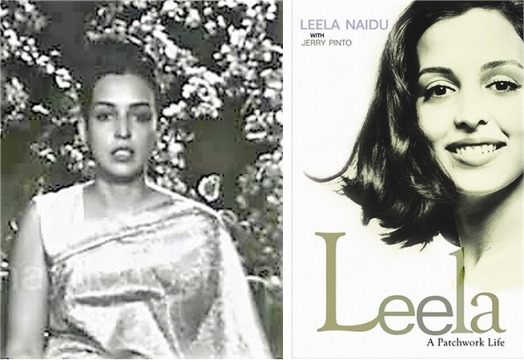
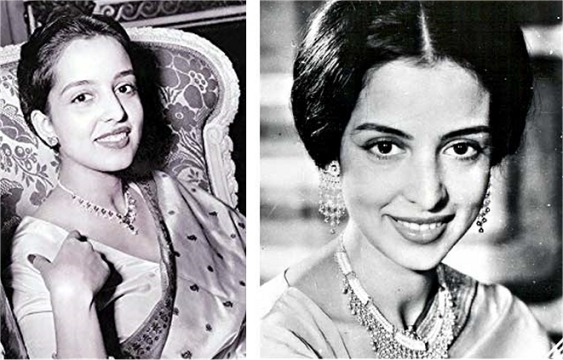
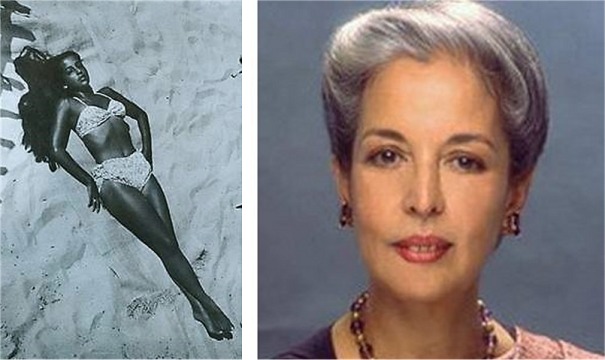
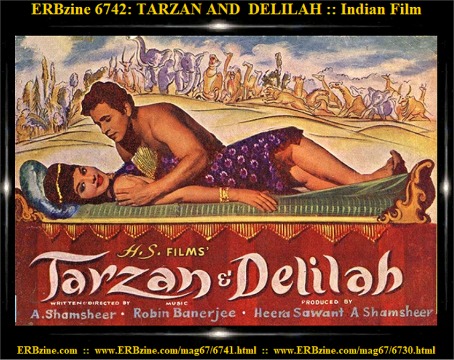
![]()
MORE ROBERT ALLEN LUPTON FEATURES
IN ERBzine
UNAUTHORIZED TARZAN FILMS
http://www.erbzine.com/mag67/6731.html
http://www.erbzine.com/mag67/6732.html
http://www.erbzine.com/mag67/6733.html
http://www.erbzine.com/mag67/6734.html
http://www.erbzine.com/mag67/6735.html
http://www.erbzine.com/mag67/6736.html
www.erbzine.com/mag67/6737.html
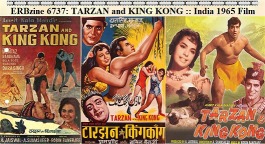
www.erbzine.com/mag67/6738.html
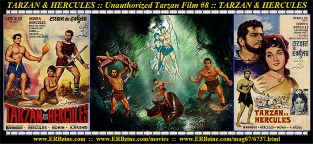
www.erbzine.com/mag67/6739.html
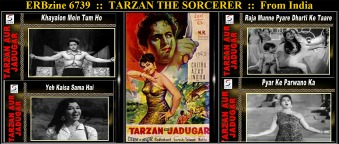
www.erbzine.com/mag67/6740.html
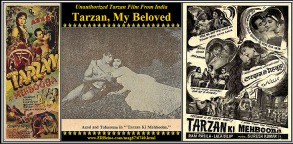
www.erbzine.com/mag67/6741.html
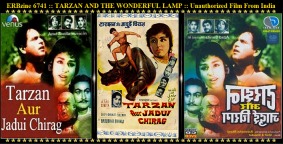
www.erbzine.com/mag67/6742.html
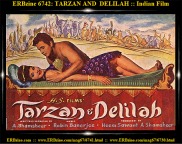
![]()
MORE ROBERT ALLEN LUPTON FEATURES
IN ERBzine
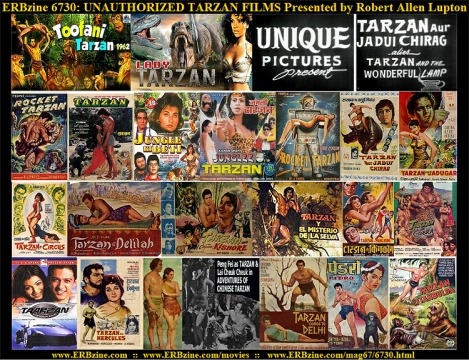
BACK TO
UNAUTHORIZED
FILM
INTRO
AND GUIDE
www.erbzine.com/mag67/6730.html
![]()
ALL THE ERB-RELATED FEATURES
IN ERBzine.com
By ROBERT ALLEN LUPTON
www.ERBzine.com/lupton
![]()
ay
For More Burroughs-Related Films
Visit
The ERBzine Silver Screen Series
www.erbzine.com/mag5/0502.html

BILL
HILLMAN
Visit
our
thousands of other sites at:
BILL
AND SUE-ON HILLMAN ECLECTIC STUDIO
ERB
Text, ERB Images and Tarzan® are ©Edgar Rice Burroughs, Inc.-
All Rights Reserved.
All
Original Work ©1996-2018/2020 by Bill Hillman and/or Contributing
Authors/Owners
No
part of this web site may be reproduced without permission from the respective
owners.